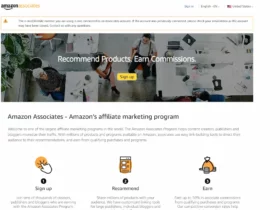At the core of every high-performing business lies a cohesive team that resonates with synergy. Team synergy is the collaborative energy that propels a group to achieve greater results than the sum of individual efforts. It is the magical ingredient that blends diverse skills, experiences, and personalities into a unified force capable of overcoming challenges and reaching new heights of success. Emphasizing communication, trust, and shared goals, team synergy increases productivity and fosters a positive work environment that promotes innovation and job satisfaction. By prioritizing and cultivating these bonds, businesses can unlock exponential potential and achieve their strategic objectives.
Building Trust Within Teams
Building trust within teams is a critical step that underpins the development of synergy. It begins with creating a safe space where team members feel comfortable sharing ideas, challenges, and feedback without fear of ridicule or reprisal. Trust is cultivated through consistent, open communication, and by demonstrating reliability and competency. Team-building activities, both formal and informal, facilitate bonding and can accelerate the trust-building process.
Engaging in regularly scheduled team building activities can significantly enhance the collective problem-solving skills of a group. These activities can range from simple ice-breakers to more complex problem-solving challenges that require collaboration and communication. The key is to foster an environment where team members feel comfortable expressing their thoughts, actively listening to others, and working together towards a common goal. In an environment of trust, team members are more likely to take calculated risks and innovate, knowing their colleagues have their back.
Encouraging Open Communication
Open communication is the lifeblood of successful teams. It is essential for the free flow of ideas and for addressing any conflicts before they escalate. Teams that communicate effectively can quickly realign themselves when faced with obstacles and can share their successes and failures in a constructive and supportive manner.
To encourage open communication, it is important to establish clear and effective channels for sharing information. Regular team meetings, open-door policies, and a culture that welcomes and appreciates feedback all play a vital role in maintaining clear channels of communication. Providing opportunities for team members to express their thoughts and concerns openly and honestly fosters a culture of trust and collaboration.
Aligning with Shared Goals
Clear and shared goals provide team members with a unified direction and a strong sense of purpose. These objectives should reflect the collective vision of the team and be embraced by all. By ensuring that each team member understands how their efforts contribute to the larger picture, motivation, and cooperation are heightened. When everyone is working towards a common goal, the team becomes more focused and productive.
To facilitate goal alignment, it is important to establish a process for setting and communicating goals that involve input from all team members. Regularly reviewing and revisiting goals ensures that they remain relevant and aligned with the team’s evolving needs and priorities. Additionally, providing ongoing feedback and recognition for progress towards the shared goals helps to keep team members motivated and engaged.
Recognizing Individual Strengths and Weaknesses
Capitalizing on individual strengths while accommodating weaknesses leads to a more efficient and balanced team. When team members are placed in roles that align with their skill sets, it maximizes productivity and job satisfaction. Moreover, recognizing and addressing weaknesses allows the team to support one another and compensate where needed, promoting a sense of collective responsibility and collaboration.
To effectively recognize individual strengths and weaknesses, it is essential to have a clear understanding of each team member’s skills, experiences, and areas for development. Regular assessments and feedback can help identify these strengths and weaknesses and guide decisions regarding task assignments and skill development opportunities. Encouraging a culture of continuous learning and growth allows team members to build on their strengths and improve in areas where they may be less proficient.
Fostering Innovation Through Diversity
Diverse teams bring a wealth of perspectives and experiences to the table, which can lead to more creative and effective solutions. Encouraging diversity in terms of skills, experiences, cultural backgrounds, and thought processes greatly enhances a team’s problem-solving ability and fosters an innovative environment where different ideas are valued and embraced.
To foster innovation through diversity, it is important to create an inclusive and respectful team culture that values and appreciates different perspectives. Actively seeking diverse talent during the hiring process and promoting diversity and inclusion initiatives within the team can help foster a culture of diversity. Additionally, providing opportunities for cross-functional collaboration and encouraging open discussions can stimulate the exchange of ideas and drive innovation.
Implementing Effective Collaboration Tools
Leveraging technology, such as project management software, communication platforms, and collaboration tools, can streamline workflow and enhance team coordination. These tools help keep everyone on the same page, facilitate seamless communication, and significantly boost the team’s ability to work together effectively, regardless of their physical location. By harnessing the power of technology, teams can overcome geographical barriers and collaborate effortlessly.
When implementing collaboration tools, it is important to select tools that align with the team’s needs and preferences. Providing training and support for team members to effectively use these tools ensures that they can fully leverage their benefits. Regularly evaluating and updating the collaboration tools based on feedback and evolving team requirements helps to maintain efficient and effective collaboration.
Investing in Team Development
Continuous learning and development are integral to maintaining team synergy. Workshops, training sessions, and team-building exercises can enrich skills, deepen relationships, and foster a growth mindset. Investing in the professional development of team members not only benefits individuals but also increases the overall competence and capability of the team as a whole.
To invest in team development, it is important to assess the specific needs and goals of the team and identify areas for improvement. Providing opportunities for both individual and team-based learning, such as workshops, seminars, and online courses, allows team members to acquire new skills and knowledge. Additionally, facilitating regular team-building activities and fostering a culture of continuous learning helps to strengthen relationships and promote a growth mindset within the team.
Celebrating Team Successes
Finally, acknowledging and celebrating achievements reinforces positive team dynamics. Recognizing both individual contributions and collective wins boosts morale and encourages a culture of appreciation and gratitude. Regular celebrations and recognition not only reward hard work but also reinforce the behaviors and values that contribute to team synergy, fostering a positive and motivated team environment.
To celebrate team successes, it is important to establish a system for recognizing achievements and milestones. This can include formal recognition programs, informal celebrations, or regular team meetings dedicated to acknowledging and appreciating team members’ contributions. Creating a culture of celebration and appreciation helps to foster a sense of belonging and encourages continued efforts towards shared goals.

Cultivating team synergy is a multifaceted endeavor that requires dedication and strategic action across various domains. By investing in trust-building, encouraging open communication, aligning with shared goals, leveraging individual strengths and weaknesses, embracing diversity, implementing effective collaboration tools, investing in team development, and celebrating successes, organizations can forge teams that are more than the sum of their parts. These cohesive units are equipped to navigate the complexities of the business landscape, drive innovation, and achieve outstanding results. As leaders and team members commit to these principles, they chart a path toward a dynamic and resilient













